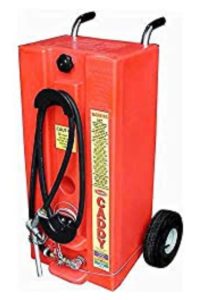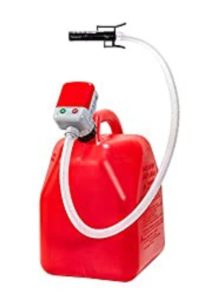What you need to know about generators and fuel storage for power outages
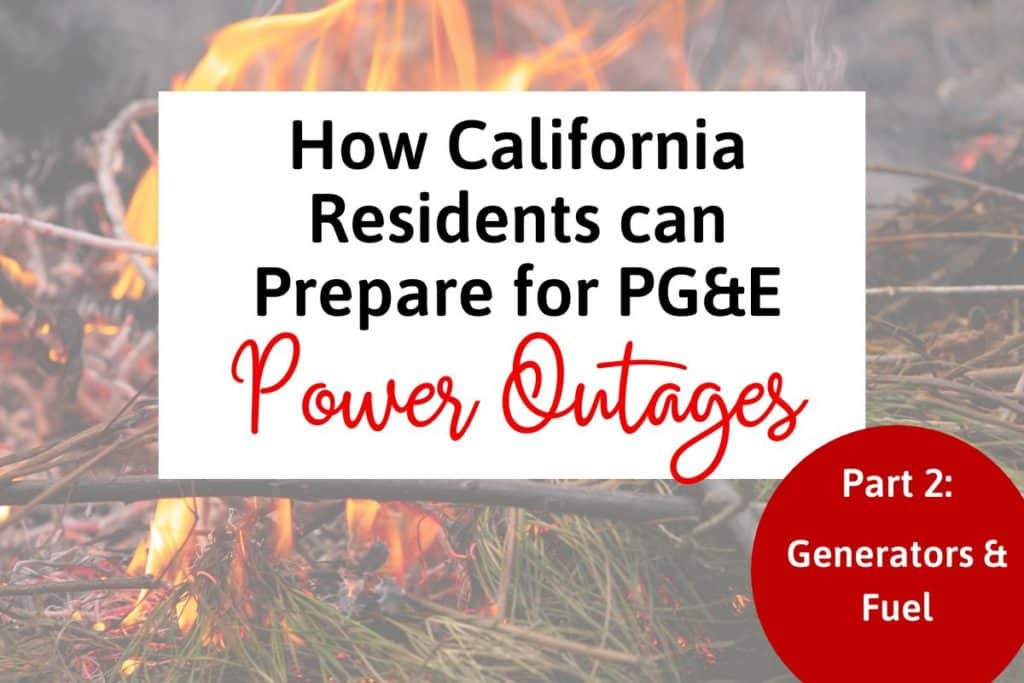
For those of you Californians who are interested in not being so drastically disrupted by the potential lengthy power outages this fire season, you may want to consider purchasing a generator.
As is with most things in this world, you get what you pay for. As a general rule of thumb, the more power a generator produces, the more it costs. The more convenient it is, the more it costs. The quieter it is, the more it costs. Are you seeing a trend here? The cooler the generator, THE MORE IT COSTS.
**This post contains affiliate links, which means if you click on a link and make a purchase, I may make a small commission at no extra cost to you.
A Note About Generator Safety
A generator emits carbon monoxide gas, which is not something to mess around with. Therefore, it is imperative that it be OUTSIDE when it is running. And by outside, I mean OUTSIDE. Not in the garage and not on your porch. It is recommended that it be at least 10 feet from your house.
There are so many things to consider when deciding if you should purchase a generator, and if so, which kind. I’m going to try to be as helpful as I can without getting too crazy into the info on each type/consideration.
Types of Generators
There are 2 main types of generators: standby generators and portable generators.
Home Standby Generators
These are a fixed part of your home, like an air conditioning unit in your backyard. They are permanently hooked into your home’s electrical system, and automatically kick on when you lose power. This makes it super convenient for you as the homeowner. You really don’t have to do anything at all; it takes care of itself.
These types of generators are typically fairly expensive and they do require professional installation, which is an added cost.
This article explains the ins and outs of what it takes to get a standby generator installed in your home. It is an excellent resource if you choose to go that route.
These generators run on natural gas or propane, which are definitely more convenient than gasoline as far as storing/rotating, which we will get to in heading in a minute.
Standby Generator Pros: Super convenient, super awesome, run on propane or natural gas, and generally fairly quiet.
Standby Generator Cons: Expensive and you can’t take them camping (or anywhere else) with you.
Portable Generators
A portable generator takes a lot more effort on your part. You have to go outside, start it up, and run extension cords from your generator to the specific appliances you would like it to provide power to.
This isn’t as simple as you would think with some items. For instance, if you have a mounted microwave, you will likely need to take it off the wall to access the plug. Not only is this inconvenient in itself, but picture several extension cords running all over your house. Don’t get me wrong…I’d rather have a few extension cords running through my house and still have the ability to use power than not, but the convenience factor is definitely something to consider.
You should NOT use just any old extension cord when powering large things in your home. Using undersized cords can lead to motor damage, generator damage, and fire hazards. To purchase a good quality, heavy-duty extension cord (let’s say a 12-gauge) of a decent length (let’s say 50 feet), will cost you anywhere from $25 – $70. Remember you will need one of these for each item you want to power simultaneously.
THIS 12-gauge 50-ft extension cord is a great deal!
Here is the same one but 100 feet, also a great deal!
Another issue with a portable generator is that without a transfer switch, you can only power things that can be plugged into an extension cord. If it is something that is directly powered by your home’s electrical system (like a well pump, furnace, or electric water heater) it needs to go through a transfer switch.
A transfer switch connects to your home’s electrical panel, and then you can select which circuits to connect to the transfer switch. Your generator plugs into the transfer switch, and this is what allows your generator to power things that you can’t stick an extension cord into directly.
Warning: transfer switches are pricey. And even more pricy to have them installed by a professional electrician (which is necessary – this is not a DIY project).
The good news is, if you decide to go with the transfer switch, you shouldn’t need a whole lot of extension cords if you get a transfer switch that can accommodate several circuits.
This is my choice of an awesome portable generator (pictured above). The Honda EU series has a great reputation (just click here and read the reviews!) and they are about the quietest portable generator out there. This one has a 7000 Watt maximum capacity / 5500 Watt continuous capacity which is a dang large capacity for a portable generator. It has an electric start (which means you press a button and it starts, unlike a pull-start). This is just a top-of-the-line, user-friendly, reliable brand, high output machine.
This is the same brand, same quality, but just a lower output (which just means it can power less things – we’ll get to that next).

Portable Pros: Smaller, less expensive, and able to be moved and used for a variety of things.
Portable Cons: Manual start-up, requires extension cords and/or a transfer switch depending on what you want to power.
For a more extensive guide on portable generators, I like this post by Happy DIY Home.
SIZE
Not all generators produce the same amount of energy. You can’t just buy a generator and expect it to power everything in your house as if the power was up and running as normal.
As convenient as air conditioners are, they require a huge amount of energy. It is definitely worth considering going without that convenience to lessen the output you will require from a generator to cut down on the cost of the generator you end up purchasing.
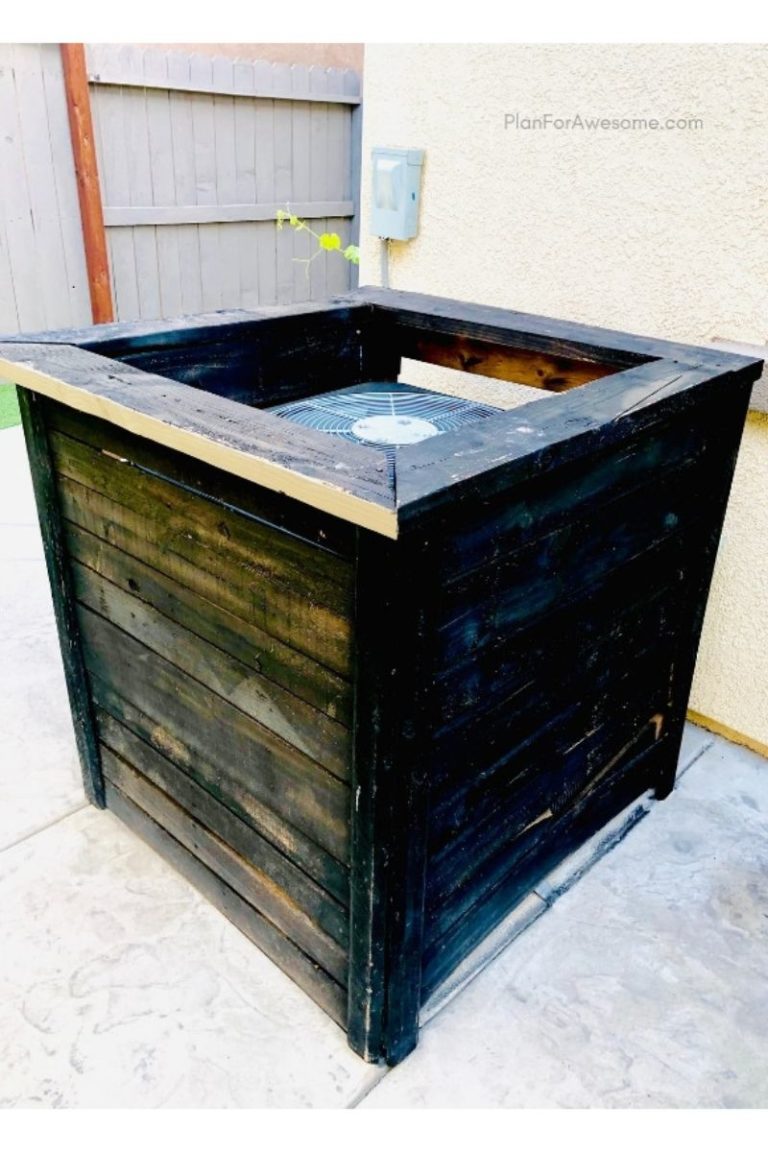
To find out what type of rated output you are looking for in a generator, you need to calculate the amount of energy you anticipate needing at a given time.
- Make a list of all the tools/appliances you want to be able to use. (Be sure to include any medical devices any family members use, as well as a refrigerator for medication that requires refrigeration).
- Figure out the wattage requirement for each item on your list. The required power should be listed on the identification plate or in the owner’s manual. If the power requirement is given in amps, multiply the amps by the volts and that will equal the watts required. Is this taking you back to your high school physics class? Me too. Ugh. I promise that’s it though. One formula. Amps X Volts = Watts
- Add up all of the Watts of all of the things you want to be running simultaneously.
- You now have the rated output you will require from your generator.
To give you an idea on how much power some main things like well water, heating system, and hot water heater will generally require, Honda has this Q&A that is really helpful.
Another thing to keep in mind is that appliances require more energy to start up than they do to run continuously. For instance, when your fridge kicks on, you can hear it start up. Those initial moments require more energy than the rest of the time the motor is working. You need to be sure to get a generator that can handle those initial surges that will be required.
Just like appliances require more energy for small amounts of time, generators are built to be able to withstand higher demands of energy for small amounts of time (called “maximum” or “starting” rating). This is not to be confused with their “continuous” rating, which is the amount of power you can count on them to produce for an extended period of time.
In other words, generators can get pushed to the limit occasionally while an appliance is firing up, but they cannot necessarily withstand that capacity longterm. So it’s really a balancing act of power required and power available. If you do not take this consideration seriously, you will end up with a very expensive piece of melted metal. So pay attention to ratings and wattage!
Unless money is not an issue for you, you will most likely want to choose a few things to power, and sacrifice everything else. Remember: the more power you require, the more expensive the unit.
Fuel Types
1. Gasoline
Storage
Storing gasoline is kind of a pain in the butt. I have looked into several different types of gasoline storage, so let me share with you what I’ve learned.
Gas Caddy
I like this caddy that has a 28-gallon capacity.
These types of fancy-looking fuel caddies are expensive and have a major flaw: the fuel flows via gravity. So the bigger the caddy, the more inconvenient it is to use, because you have to hold it higher than the thing you are filling with gas. Even if you have a high shelf you can store it on so that the fuel can flow downward into the generator (or your car, or whatever you are wanting to fill with gas), you have to be able to lift the caddy full of gasoline, onto that shelf.
However, I found a really awesome pump for $60.
This pump eliminates the need to have the caddy higher than the item you are fueling.
If you are willing to get the pump in addition to the caddy, then I think this combo is a good option. The only issue at that point is unloading the full caddy out of your car after filling it up at the gas station.
Gas Cans
These are the gas cans I settled on after reading reviews and pricing them out. They are pretty basic, they fulfill California’s guidelines (yep – California even has their own standards for gas cans ?), and they are a decent price. The reviews are great except for the spouts on the cans, which ironically, are new due to California’s stupid guidelines.
Because of this, I would HIGHLY recommend you get the pump that I talked about. Lifting a 5-gallon can full of fuel and pouring it into a teeny little hole without spilling can present quite a challenge. This pump is seriously worth its weight in gold. It is virtually effortless to use, and all but eliminates the danger of spilling fuel. It works in 5-gallon gas cans just as well as in a fuel caddy.
In short, regardless of which way you choose to store gasoline, GET THE PUMP!
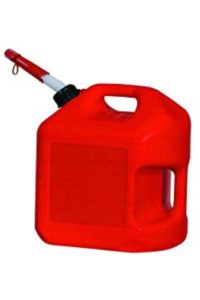
Rotating the Gasoline
Gas goes bad! You can add a fuel stabilizer to make it last a little longer, but even then, it should be rotated every 6 months or so.
This isn’t the end of the world, but it is a pain. We usually just find a convenient time to fill our car up with the gasoline in our gas cans every few months. Then we take the empty gas cans to the gas station and fill them up, leaving the windows rolled down for our drive home.
2. natural Gas or Propane
Propane and natural gas are much more convenient to run a generator on than gasoline. However, gasoline is more efficient.
Natural gas is awesome because you can tap into your home’s natural gas line and you don’t have to worry about storing fuel at all.
- No storing it
- No rotating it
- No spilling it
- Pretty much limitless supply (at a cost, of course)
- Low emissions
- Cleaner for your motor (doesn’t leave residue like gasoline does), which extends the life of your generator
Liquid propane is great for a lot of the same reasons as natural gas. However, LP is generally more expensive.
- No rotating necessary – this stuff doesn’t go bad.
- No spilling
- Low emissions – like natural gas, propane is a much cleaner fuel than gasoline. It’s better for the environment and better for your engine.
If you already have a gasoline-powered generator, but wish it ran on natural gas or liquid propane, there are conversion kits out there. This website seems like a good option and they seem to have a very comprehensive understanding and inventory. I don’t have experience with them, so this is not a recommendation necessarily, but this just shows you that you have options…

Dirty vs Clean Power

One thing about modern technology is that it’s snooty when it comes to energy. Lots of stuff (like our fancy TVs and computers) requires “clean” power as opposed to “dirty” power. Basically, the cheap generators are more likely to be producing dirty power, so you want to be careful.
Inverter generators produce the cleanest power, but they are…you guessed it…more expensive (the Honda generators that I linked to earlier are inverter generators, which make them quiet and facilitate them producing clean power).
When shopping for a generator, make sure to pay attention to the THD, and shoot for THD to be under 5%.
Noise
Standby generators are typically quieter than portable generators, but there are definitely “whisper-quiet” options out there…they just cost a lot.
This is not just about level of annoyance, although that is something to consider.
You also need to consider the possibility of theft. If you have a generator that attracts a lot of attention because of how noisy it is, it is more probable that it will be stolen. And remember how you can’t run these things in your house or your garage? Which means it’s going to be out in your yard, making it an easy target for theft.
On that note…
Protecting Your Generator (from theft and the elements)

I just can’t do it better than this video does. So I’m going to just say, watch this video.
Maintenance
Ugh. The “M” word. But it’s reality. Most people don’t realize that generators need oil changes! And most of them should have one within the first 25 hours of running, and then every 50-60 hours after that. That may seem like a lot, but with the projected 5+ day power outages in California this fire season, that would mean you would need to change the oil 3 times in one week!
So be sure to stock up on oil filters and oil that is specific to the generator you end up purchasing. If you are in a situation where you will need this to be running 24/7, it’s probably not going to be a very convenient time to run to the store for some oil change necessities.
While this is by no means everything there is to know about generators and fuel, it should get you started. This can be an overwhelming topic for people who don’t have experience with it, and I hope this was helpful!
Please add comments of things I missed that you think would be helpful for people to know, and I will edit this post as comments come in!
To my fellow Californians: good luck this fire season! And DON’T WAIT UNTIL FIRE SEASON STARTS TO GET PREPARED! START NOW!
If you missed How California Residents can Prepare for PG&E Power Outages Fire Season 2019 PART 1, go check that out NOW, and commit to covering one topic per week. That way, by the time fire season hits, you’ll be ready!
For an extra resource, see Essential Items to Purchase to Prepare for Power Outages.
And be sure to pin this post on Pinterest so you have it as a reference!
5 simple things you can do to get your family prepared if you don't have thousands of dollars or hundreds of hours
Receive EXCLUSIVE SUBSCRIBER-ONLY FREE PRINTABLES, INCLUDING "THIS OR THAT EMERGENCY PREPAREDNESS," with 5 things that take 15 minutes or less!


